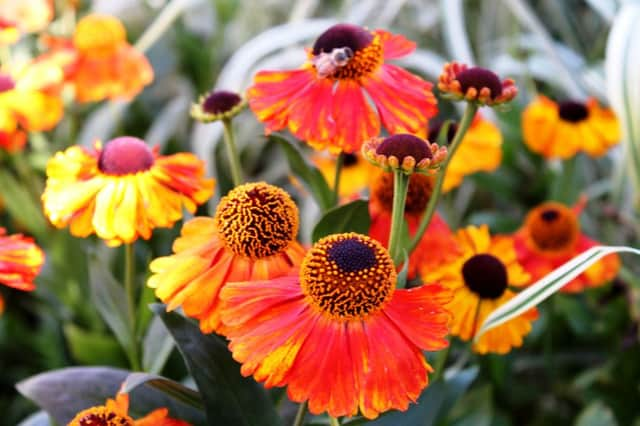Blooms for a Bard


Shakespeare may never have written about it (although he seems to have liked roses rather a lot) but had he seen it, he would surely have created a sonnet, nay, a whole play, about the Helenium, whose sunny blooms are still bringing joy to many gardeners’ hearts.
For real heat, a blazing vibrancy, Heleniums such as the variety, ‘Waldtraut’, which looks so hot that it could almost be used to heat the house in winter, are now one of the brightest and best-loved blooms of autumn.
Advertisement
Hide AdAdvertisement
Hide AdBees love it, using the flower’s domed centres as landing pads from which to scour for nectar, and the Bard would have lauded it, although Helenium, Prince of Denmark, doesn’t sound quite right.
Heleniums, which somehow fell from grace during the second quarter of the last century, are now a buzz word for insects and discerning gardeners.
Numerous new varieties from the Continent have helped to revive interest in sun-lovers, and the above-mentioned ‘Waldtraut’, with its intense orangeness, is the favourite of a new generation of gardeners who have come to rely on it to provide long-lasting interest year after year.
At 120cm (4ft) high, it fits in remarkably well at the middle or back of the border, and, when packed together, doesn’t normally need staking.
Advertisement
Hide AdAdvertisement
Hide AdIt looks fantastic planted in bold drifts. Plants usually take a year to acclimatize to their home, so don’t expect newly-planted specimens to reach their full height until year two.
To propagate, divide established clumps every two or three years in spring. Dividing in autumn isn’t such a good idea as the small plants produced tend to die during the winter.
Heleniums look a bit like small sunflowers, and in some parts of the world they are actually known as the swamp sunflower – and sneezeweed because their leaves were once used to make snuff.
I like to believe that had Shakespeare had the chance to see the flowers in the 16th century, he would have loved them as much as gardeners do now in the 21st.